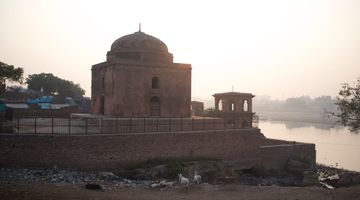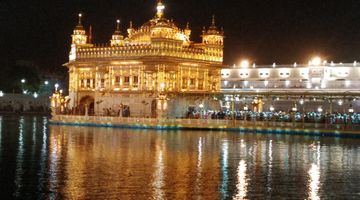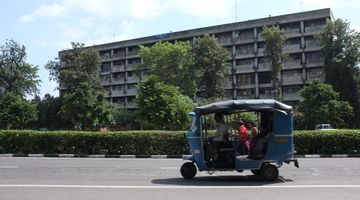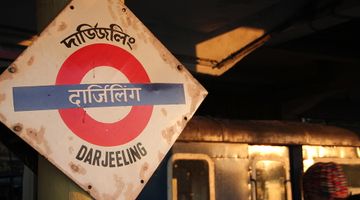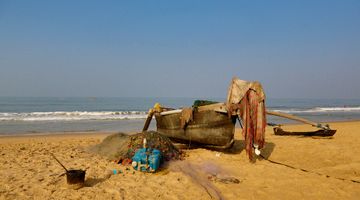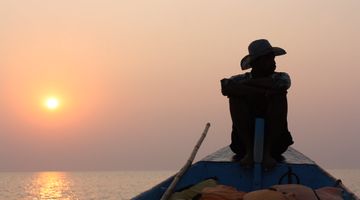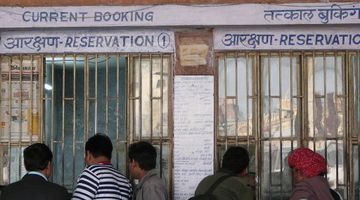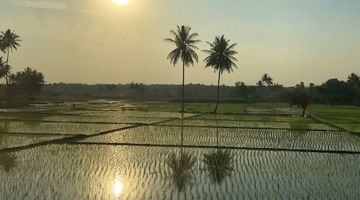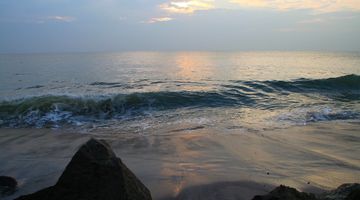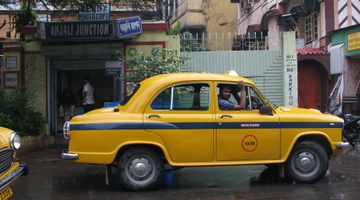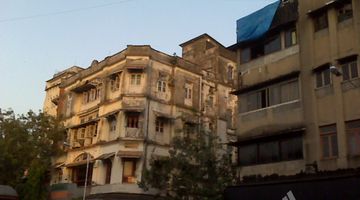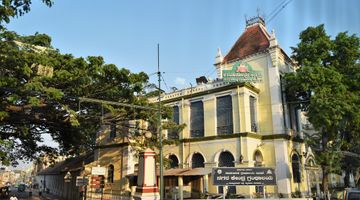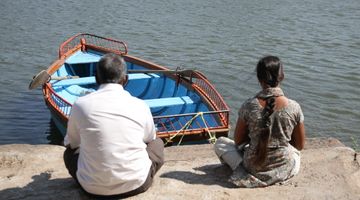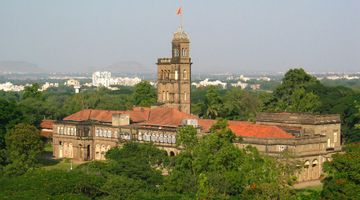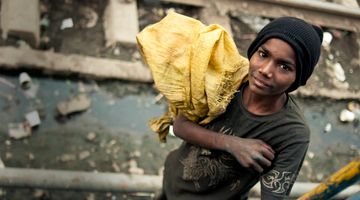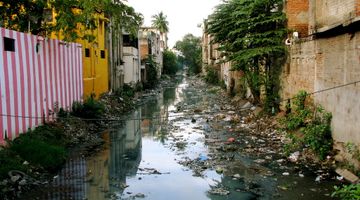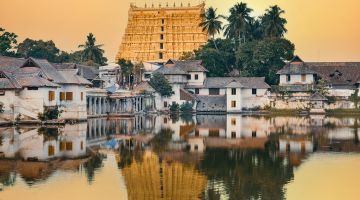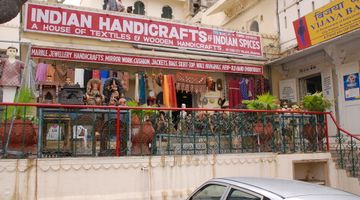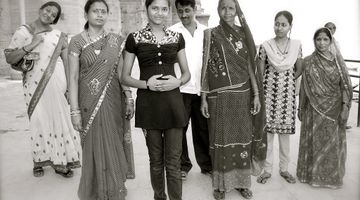India Travel Guide
India is a country of unparalleled diversity and home to an eclectic mix of cultures, religions, and people. It is a land where modernity and tradition, urban and rural, peaks and valleys coexist in cohesive harmony. No wonder its snow-capped mountains, palm-fringed beaches, serene temples and bazaars, rustic fishing villages, and software supercities have earned it the title of one of the most multi-dimensional countries on earth.
Why should you visit India?
India's appeal lies in its diversity. The country has majestic palaces, intricate temples, bustling markets, and serene landscapes. India boasts 40 UNESCO World Heritage Sites, including the iconic Taj Mahal, ancient Varanasi, and the historic Red Fort in Delhi. Each region has its distinct culture, language, and cuisine, making every part of your journey a new adventure.
India's national parks and wildlife sanctuaries offer sightings of Bengal tigers, Asiatic lions, elephants, and diverse bird species. Whether you're seeking spiritual enlightenment, adventure, or relaxation, India offers something for everyone.
How to get to India?
India is well connected by air, with major international airports in cities like Delhi, Mumbai, Bengaluru, Chennai, and Kolkata. Direct flights from Europe, North America, Asia, and the Middle East make travel convenient. Domestic flights connect smaller cities, making exploring different parts of the country easy.
How to get to India from the USA?
To travel from the US to India, fly from major US cities such as New York, Chicago, San Francisco, or Los Angeles to Indian cities such as Delhi, Mumbai, or Bangalore with direct or connecting flights. US citizens require a visa, which can be obtained online as an eVisa or at an Indian consulate. Taxis, airport transfers, and shuttle services are available upon arrival at major airports such as Delhi or Mumbai.
How to get to India from the UK?
To travel from the UK to India, fly from major UK airports, such as London Heathrow, Manchester, or Birmingham. Direct flights and connecting flights are available with various airlines. British citizens need a visa to enter India, which can be obtained online as an eVisa or at an Indian consulate. Upon arrival at airports in India, taxis, shuttles, and transfer services are available to get you to your destination.
How do you get to India from Europe?
The fastest way to travel from Europe to India is by plane, with direct routes from major cities like London or Paris to Delhi or Mumbai taking around 8-10 hours. Upon landing at major Indian airports, a range of transportation options like taxis, shuttles, or private transfers are available to reach your destination smoothly.
How to get to India from Australia?
To travel from Australia to India, take a direct flight with airlines such as Qantas or Air India or transfer through transport hubs such as Singapore or Kuala Lumpur. You can also consider a cruise, although this is less common. For adventure, fly to Southeast Asia and travel overland through Thailand or Myanmar to India, but plan carefully.
Best time to visit India
The best time to visit India depends on the region. The cooler months from October to March are ideal for most parts of the country, with pleasant weather for sightseeing and outdoor activities. The monsoon season from June to September brings rain to the southern and eastern regions, rejuvenating the landscape but may disrupt travel plans in some areas.
October to March is the best time to visit North India, including Delhi, Rajasthan, Agra, and the Himalayas.
April to June. Hill stations and higher altitudes should escape the heat.
June to September. It is ideal for visiting the lush landscapes of Kerala, Goa, and the Western Ghats.
How to get around India?
India has a vast and well-connected transportation network that includes trains, buses, flights, and private cars.
Getting around this immense country is surprisingly easy and inexpensive, as India’s rail network is one of the world’s most extensive and well-connected. Train bookings open 90 days before departure time, but seats tend to fill quickly, with an estimated 20 million people traveling by train in India daily. It is, therefore, advisable to book in advance whenever possible.
Local and tourist buses are also widely available within the country and are perfect for short-distance journeys. Rickshaws and taxis can be found on every street corner and will get you around speedily and cheaply.
If, however, you’re traveling from one end of the country to the next, we recommend you check out some of India’s domestic airlines. It is the fastest and most reliable way to travel around India, especially since nowadays airfare prices are very competitive, and you can almost always get a great deal from one of the country’s budget airlines, such as GoAir, IndiGo, SpiceJet, Air India, or Jet Airways.
Trains in India
India's extensive railway network is one of the largest in the world and connects almost every corner of the country. Train travel is essential to exploring India, with routes that showcase stunning scenery, from the deserts of Rajasthan to the lush Western Ghats.
Services range from luxurious options like the Palace on Wheels to inexpensive sleeping and chair cars. Popular routes include Delhi to Agra, Mumbai to Goa, and the scenic Darjeeling Himalayan Railway. Booking is recommended, especially during the peak season, and tickets can be purchased online from the IRCTC website or travel agencies.
Buses in India
Buses are a vital mode of transport in India, especially for connecting remote regions and areas that must be served by trains or flights. Both public and private operators provide various services, from essential to luxury buses.
Government buses, like those run by state transport corporations, offer budget travel options, while private operators such as RedBus, VRL, and Volvo offer more comfortable and faster services with amenities such as air conditioning, reclining seats, and in-flight entertainment.
Buses are widely used for short—and long-distance trips, making them affordable choices for all travelers.
Taxis in India
Taxis, auto-rickshaws, and ride-hailing apps are widely available in most Indian cities, offering convenient and flexible transportation options. Traditional taxis are usually found at airports, train stations, and city centers, while auto-rickshaws provide an affordable and quick way to get around busy streets.
Ride-booking apps make booking various vehicles, including cars, autorickshaws, and bike taxis, easy and cashless. Negotiating the fare in advance or using a meter to ensure a fair price is best.
Domestic Flights in India
Domestic flights in India are convenient for quickly covering long distances and connecting major cities and regional hubs. Low-cost airlines like IndiGo, SpiceJet, and AirAsia India offer frequent services, making it easy to travel across the country.
Key airports include Delhi, Mumbai, Bangalore, and Kolkata, with connections to popular destinations like Goa, Jaipur, and Kochi. Booking in advance often secures the best fares, and airport transfers are widely available, adding to the ease of domestic air travel.
Where to go in India?
India is huge. It is not easy to choose where to go. There are beautiful beaches along the western coast and mind-blowing trekking opportunities in the Himalayas mountains; intricate centuries-old temples oozing history and fantastic animal encounters; endless delights for food lovers at virtually every corner of the country, and each street is a paradise for photographers.
The country is divided into six significant regions:
Himalayan North with Shimla and Manali hill stations luring tourists with their cool climate and mountainous landscape;
The Plains, home to the capital city of Delhi as well as the spectacular temple of Taj Mahal in Agra and mystique and awe-inspiring Varanasi;
Western India's main draw is the beaches of Goa, but intriguing destinations like Jaipur, Udaipur, Jodhpur, and Jaisalmer in the state of Rajasthan also exist.
Southern India is a big tourist hub, with Kerala and Karnataka having the lion’s share of international visitors.
Darjeeling, located in the state of West Bengal and known worldwide for the fine teas produced there, and Kolkata, also known as the renowned city, are both found in the Eastern India region.
North-Eastern India is mostly a dark horse for tourists, with its seven smaller states commonly known as the Seven Sisters.
Top Places to Visit in India
Delhi
India's capital blends old and new, with historic monuments like the Red Fort, Qutub Minar, and India Gate coexisting alongside modern shopping malls and restaurants. Visit bustling markets, taste street food, and explore museums showcasing India's rich history.
Instead, New Delhi boasts modern architecture, upscale neighborhoods, and shopping malls like Select Citywalk and DLF Emporio. Delhi's bustling markets, such as Chandni Chowk and Sarojini Nagar, offer authentic shopping, while Connaught Place is home to trendy shops and restaurants. Take the chance to sample the city's legendary street food, from chats to kebabs, and visit museums like the National Museum and the Gandhi Smriti to explore India's deep history and culture.
Where to go from Delhi?
Delhi → Agra
Delhi → Jaipur
Delhi → Varanasi
Delhi → Rishikesh
Agra
Home to the Taj Mahal, Agra is a must-visit for its magnificent Mughal architecture, including the Agra Fort and Fatehpur Sikri. Outside the Taj, the Agra Fort is a vast red sandstone fortress with palaces, halls, and mosques, offering a glimpse into the opulent lifestyle of the Mughal emperors.
Outside the city, Fatehpur Sikri, the abandoned capital of the Mughals, is an architectural wonder with grand courtyards, palaces, and the Buland Darwaza, one of the most enormous gates in the world. Agra is also famous for its bustling markets, which offer unique souvenirs such as marble inlays, leather goods, and traditional handicrafts.
For a different perspective on the Taj Mahal, visit Mehtab Bagh across the Yamuna River. Here, you can enjoy a peaceful view of the monument, especially magical at sunrise or sunset. Agra's culinary scene is equally enticing, with local delicacies like peta (a sweet made from ash gourd) and Mughlai dishes that reflect the city's historical ties to royal cuisine.
Where to go from Agra?
Agra → Delhi
Agra → Jaipur
Agra → Lucknow
Jaipur
Known as the Pink City, Jaipur is the bustling capital of Rajasthan and a key location in India's Golden Triangle. Known for its distinctive rose-hued buildings and rich royal history, Jaipur offers a unique blend of architectural wonders and cultural experiences. The majestic hilltop Amber Fort is a must-see, with its stunning mix of Hindu and Mughal architecture, including intricate carvings, mirrors, and large courtyards.
The City Palace, still home to Jaipur's royal family, is another attraction that offers a glimpse into the city's regal past with its opulent palaces, museums, and courtyards. Nearby, the Hawa Mahal, or Palace of the Winds, is an impressive five-story structure with 953 small windows for royal women to observe street life inconspicuously.
Jaipur's Jantar Mantar, an ancient astronomical observatory, is also a UNESCO World Heritage Site and showcases the scientific achievements of the past. The city's bustling bazaars, such as Johari Bazaar and Bapu Bazaar, are ideal for shopping for traditional jewelry, textiles, and handicrafts, including famous printed fabrics and blue pottery.
Where to go from Jaipur?
Jaipur → Delhi
Jaipur → Jodhpur
Jaipur → Kota
Jaipur → Udaipur
Varanasi
One of the world's oldest cities, Varanasi is a spiritual hub on the banks of the Ganges River. Experience the evening aarti (prayer ceremony) and explore ancient temples and ghats.
Varanasi, known as Kashi, is one of India's holiest cities and a primary Hindu pilgrimage site. Apart from the breathtaking evening aarti on the banks of the Ganges, visitors can also take a sunrise boat ride for a stunning view of the Ghats and daily rituals.
The city is famous for its silk saris, Banarasi paan, and classical music. Varanasi is home to the revered Kashi Vishwanath Temple and has narrow, winding streets filled with history, spirituality, and vibrant local life.
Goa
Goa is one of the most popular tourist destinations in India. Over two million travelers visit the state’s sandy shores annually.
But the state has a lot more to offer besides its beach-side resorts. Its diverse cultural and geographical features range from Portuguese-influenced food and architecture in Panjim and Margao to bedazzling white waterfalls, wildlife reserves, Christian and Hindu festivals, centuries-old cathedrals, and plenty of nightlife hot spots.
Goa is lush, green, and gorgeous and has many attractions and activities, including numerous options for yoga and alternative therapies, water sports, and wildlife spotting. It is an ideal place to visit after a beach holiday with a difference because you will surely be awestruck by Goa’s natural beauty, the state’s rich history, and the famous Goan curry.
Please note, however, that prices in Goa are generally higher than in most other states and fluctuate wildly depending on the season. They climax during the busy Christmas and New Year period, or peak season. Though famous for its beaches, Goa has plenty of waterfalls, rivers, hills, and wildlife for trekking adventurers. Some of the most popular trekking destinations in the state are Todo Waterfalls, Udaan Dongor, Mollem National Park, and Chorla Ghats.
Mumbai
Known as the 'City of Dreams,' Mumbai is a pulsating mix of contrasts. Home to India's financial hubs and Bollywood stars, it's grounded in its street life and rich history.
India Gate symbolizes the city's colonial past, while the Chhatrapati Shivaji Maharaja Terminus, a mix of Gothic and Victorian architecture, reminds visitors of Mumbai's historical significance.
As evening falls, the curved stretch of Marine Drive lights up, calling it "The Queen's Necklace." The city never sleeps - whether you're picking up spicy vada pav from a street vendor or shopping in Bandra's high-end boutiques, Mumbai's energy is infectious, a place where tradition and ambition collide.
Where to go from Mumbai?
Mumbai → Goa
Mumbai → Pune
Mumbai → Ahmedabad
Mumbai → Hyderabad
Mumbai → Surat
Kerala
Kerala is one of the most advanced and socially progressive states in India. It is also a place of exceptional beauty known for its Ayurvedic treatments, backwaters, rice paddies, tea plantations, elegant houseboats, and delicately spiced and aromatic cuisine.
Kerala has a unique labyrinthine network of rivers, canals, and lagoons between the Western Ghats and the Arabian Sea. It also boasts some of the most pristine beaches in India. The state is dotted with former-colonial trading towns full of breathtaking architecture and spice and tea plantations, home to wild elephants, exotic birds, and tigers.
The Hindu temple festivals, held between November and March in Thiruvananthapuram and Kochi, are a must-see for their spectacular fireworks displays and brightly decorated elephant processions. Kerala has a vibrant mix of exotic landscapes and city attractions, perfect for the first-time traveler.
Rajasthan
Known for its desert landscapes, majestic forts, and royal palaces, Rajasthan offers a glimpse into India's regal past. Key cities include Udaipur, Jodhpur, and Jaisalmer. Rajasthan, the 'Land of Kings' is steeped in history, with its desert landscapes, intricate forts, and opulent palaces telling tales of a bygone era. The state is famous for the Thar Desert, where camel safaris offer a unique way to explore the dunes. Often referred to as the 'City of Lakes,' Udaipur is known for its romantic lakeside palaces, including the stunning Lake Palace.
Jodhpur, the "Blue City," is dominated by the majestic Mehrangarh Fort, while Jaisalmer, the "Golden City," rises from the desert with its sandstone fortress and havelis. Rajasthan's vibrant culture is reflected in its festivals, folk music, and handicrafts, while Jaipur's bustling markets are known for gems, textiles, and traditional Rajasthani art. The state also has the Ranthambore Wildlife Sanctuary, where Bengal tigers can be seen.
Karnataka
Karnataka, situated a stone’s throw from Goa, is renowned for its magnificent landscape, emerald green valleys, gushing rivers, exotic wildlife, and a rich cultural heritage.
Bangalore, the state capital, is known worldwide as India’s Silicon Valley. It is famous for its relaxed atmosphere, towering shopping malls, buzzing nightlife, and super fashionable bars and clubs.
Another major city that offers something entirely different is Mysore. About two hours from the capital, it houses some of the state’s most majestic palaces and gardens and is famous for silk and incense production.
If you’re looking for a beach break, we recommend you head to the holy city of Gokarna. Located on the Arabian Sea coastline, the town is set behind the forest-covered foothills of the Western Ghats, offering a grand view of Karnataka’s scenic splendor. This small but lively coastal resort has numerous beaches, cheap eateries, water sports activities, and a relaxed pace of life, which you won’t find anywhere else. Perfect for a quiet romantic getaway or an extended family holiday.
What to do in India?
Visit the Taj Mahal
A UNESCO World Heritage Site and one of the New Seven Wonders of the World, the Taj Mahal in Agra is an architectural masterpiece and an iconic symbol of love. Built by Emperor Shah Jahan in memory of his wife, Mumtaz Mahal, this white marble mausoleum is known for its intricate carvings, symmetry, and changing colors at different times of the day. The Taj Mahal is best seen at dawn, when the soft light reflects off the marble, adding to its ethereal beauty.
Explore the Backwaters of Kerala
Cruise on a traditional houseboat through the serene backwaters and lagoons of Kerala. Unlike the bustling cities of India, Kerala offers a peaceful retreat with serene bays. Cruise on a traditional houseboat through a network of lagoons, lakes, and canals, admiring the lush green scenery and local village life. The region is also known for its Ayurvedic treatments and cuisine rich in coconut and spices.
Take a Yoga Retreat
Rishikesh and Goa are two of the most sought-after destinations in India for yoga and wellness retreats. Known as the 'Yoga Capital of the World', Rishikesh offers a tranquil environment along the Ganges River, an ideal place for meditation and spiritual growth.
Many yoga ashrams and schools offer exciting experiences, including teacher training programs. Goa, on the other hand, combines yoga with a beach holiday, offering tropical retreats that often focus on Ayurvedic healing and detoxification programs.
Try Wildlife Safari
Go on a wildlife safari to Ranthambore, Jim Corbett, or Kaziranga to see Bengal tigers, elephants, and rhinos in their natural habitat. Ranthambore is famous for its Bengal tigers, and Jim Corbett offers a variety of wildlife, including leopards and elephants. Kaziranga is known for its one-horned rhinoceros population.
Himachal Pradesh: trekking and wildlife spotting
Trekking and wildlife spotting is one of the key tourist attractions in India.
The state of Himachal Pradesh, in the heart of the Himalayas, is the perfect place to go, whether you’re a casual hiker or a seasoned trekker. The state boasts some of India's most scenic and remote routes and some of the best wildlife sanctuaries in the North. Kerala, also known for its trekking culture, has magnificent tea plantations around hill station towns, such as Kumily and Munar. It offers many trekking routes and chances to spot exotic birds, snakes, monkeys, and tigers.
Need more beaches?
There are plenty of beach-side resorts in India, and the Arabian Sea locates some of the most popular ones. Most of these are in Goa, blessed with golden sands and an aquamarine coastline. Some of the most populated beaches are Candolim, Baga, Anjuna, and Arambol, located in North Goa. The less populated and pricier beach resorts are in South Goa, including Palolem, Colva, and Benaulim.
Another place to visit if you’re after a beach holiday is Gokarna, which has five beaches in total. Gokarna’s Main Beach and Kudle Beach are west-facing, while Om Beach, Half Moon Beach, and Paradise Beach are south-facing. All the beaches in this compact seaside town are uniquely atmospheric and charming.
Kerala also has some of the best beaches in the country. Tourists favor Kovalam due to its shallow waters, sophisticated eateries, and friendly vibe, while Varkala Beach is renowned for its relaxed atmosphere and rustic charm. Alleppey, Shankumugham, and Cherai Beaches are also great—ideal for a day trip or a sunset picnic.
Where to stay in India?
India offers accommodations from dormitories to luxury resorts to suit all tastes and budgets. Accommodation in India is vastly varied, so you are guaranteed to find something to suit your budget. Cheap accommodation generally comes in many guises, including hostels, dormitories, railway retiring rooms, beach huts, homestays, and basic hotels.
Mid-range accommodation is similar across the country. It consists of modern-style concrete blocks offering free Wi-Fi, small en-suites, and extras such as cable or satellite TV, air conditioning, and sometimes hot water. Mid-range hotels also have in-house restaurants, chai shops, communal lounges, and car rental services.
Top-end places and luxury chain hotels are also aplenty in India. Almost all of these will offer super efficient service, European-style décor and facilities, in-house restaurants and bars, a 24-hour front desk, and all the creature comforts you might expect.
Prices across all accommodation sections vary greatly depending on location and the time of year you intend to visit. Do keep in mind, however, that most establishments raise their tariffs during peak season, which usually coincides with the best weather for the area’s sights and activities – normally summertime in the mountains (June to October) and the cooler months in the plains (October to mid-February).
What to eat in India?
India's culinary landscape is as diverse as its culture, offering a variety of flavors that vary from region to region. If you're in the south, you can't miss Masala Dosa, a crispy rice pancake filled with spiced potatoes, usually served with a spicy coconut chutney and a flavorful lentil soup known as sambar.
For those heading north, Butter Chicken is a decadent, creamy delight. Tender chicken is cooked in a buttery, melt-in-your-mouth tomato sauce. In Hyderabad, Calcutta, or Lucknow, you will find aromatic Biryani, a multi-layered rice dish with spices and saffron, often paired with marinated meat or vegetables.
If you're craving something hearty in North India, try Chole Bhature, a combination of spicy chickpea curry and deep-fried flatbread that's as hearty as it is flavorful. For a quick bite on the streets of Mumbai, the legendary Vada Pav offers spiced potato fritters in a bun served with spicy chutney—the perfect expression of India's love of bold flavors.
Each region presents a unique culinary experience, making leaving India without enjoying its diverse and vibrant food culture impossible.
Maharashtra
For those searching for a culinary adventure, we recommend you head to Pune, in Maharashtra. Pune is a modern metropolis with a small-town feel known as a burgeoning foodie paradise. If you’re after authentic Southeast Asian fare and genuinely unique fusion and novelty dishes, this is the place to go.
Gujarat
Another city that’s built a reputation on its cuisine is Ahmedabad, which has the widest choice of places to eat in Gujarat. The city is famous for its glamorous eating-out culture, innumerable varieties of bread, and a vegetable curry called shaak. Thiruvananthapuram, in Kerala, is also a must if you’re into your food. There, you will find everything from a traditional Sadhya (thali) to quick-fry food trucks, innovative fusion kitchens,s, and traditional South Indian idlis, dosas, and uttapam.
Visa Requirements for India
Most travelers need a visa to enter India, which can be obtained online via the e-Visa system. The e-Visa allows stays of up to 30 days, one year, or five years, depending on the type chosen. It'd be best for you to apply at least four days before your trip. Please ensure your passport is valid for at least six months from your arrival date in India.
How long to stay in India?
A 10-14 day trip allows you to explore India's highlights, including the Golden Triangle (Delhi, Agra, Jaipur) and other destinations. A 3-week itinerary provides more time to visit additional regions like Kerala, Goa, or the Himalayas.
The Best Travel Itinerary in India
Day 1-2: Delhi - Explore historical sites and markets.
Day 3-4: Agra - Visit the Taj Mahal and Agra Fort.
Day 5-6: Jaipur - Discover palaces, forts, and local bazaars.
Day 7-9: Varanasi - Experience spiritual rituals on the Ganges.
Day 10-12: Kerala - Cruise the backwaters and relax on the beaches.
Day 13-14: Goa - Enjoy the beaches, nightlife, and cuisine.
Tips for Traveling in India
Stay hydrated. Drink bottled or filtered water to avoid stomach issues.
Dress modestly, especially when visiting religious sites, and cover your shoulders and knees.
Bargain. Bargaining is common in markets, but always do so respectfully.
Get travel insurance. Cover medical expenses, trip cancellations, and lost belongings.
FAQ
1. Is it safe to travel in India?
India is generally safe for tourists, but staying cautious is essential, especially in crowded areas.
2. What is the currency in India?
The currency is the Indian Rupee (INR). ATMs are widely available, and credit cards are accepted in most urban areas.
3. What should I wear in India?
Light, breathable clothing is ideal. Bring modest attire for religious sites and a light jacket for cooler regions.







